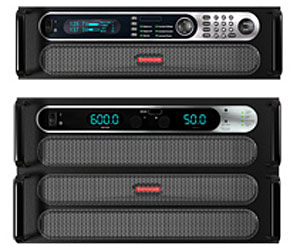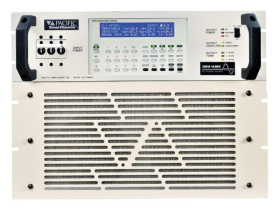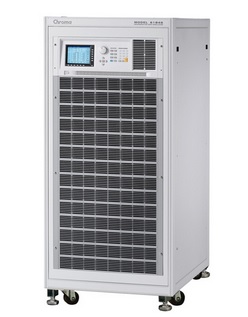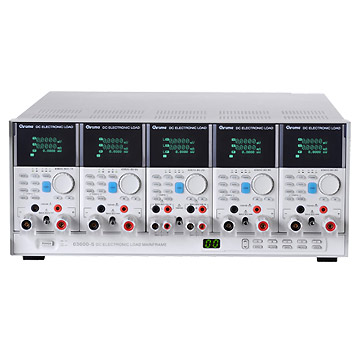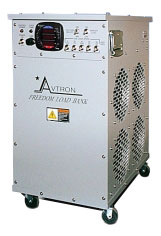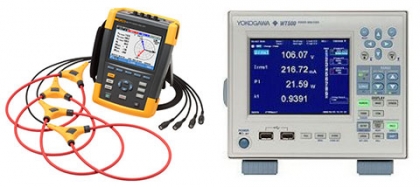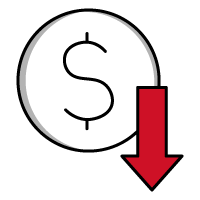Power Testing Equipment
Power Supplies and Electronic Loads are forms of test equipment that go together like Signal Generators and Signal Analyzers. Power supplies generate precise amounts of energy to power a device under test (DUT) while electronic loads provide the means to measure the output of an energy source, such as an uninterruptible power supply (UPS), an inverter, or a battery. Power supplies and loads are available for AC or DC testing, over a wide range of power ratings and capacities. Finding the right match for an application is a matter of understanding the specifications for each type of instrument and the performance levels needed for the measurements in mind.
AC Power Sources and DC Power Supplies are defined by a voltage range, maximum voltage, current range, maximum current and total power. Some supplies may also be rated for a short-duration, peak current level above and beyond the maximum rating, as might be used for inrush current testing. In addition, AC power sources have adjustable frequency ranges and may have standard frequency settings, such as sine wave outputs at 50/60 Hz, to simplify testing of standard AC-powered devices. AC power sources are usually differentiated in terms of their signal purity by the amount of distortion at a standard output setting, such as 50/60 Hz for ease of comparison with other AC Power Sources.
Related Equipment Categories
We stock Power Equipment for short-term or long-term rental or purchase.
DC Power Supplies
|
AC Power Sources
|
Battery Test Systems
|
Grid Simulators
|
||||
DC Electronic Loads, up to 3kW
|
AC Electronic Loads and AC/DC Combo Loads
|
Portable Load Banks
|
Power Analyzers
|
DC Power Supplies
|
AC Power Sources
|
||
Battery Test Systems
|
Grid Simulators
|
||
DC Electronic Loads, up to 3kW
|
AC Electronic Loads and AC/DC Combo Loads
|
||
Portable Load Banks
|
Power Analyzers
|
Recent Blogs on Power Testing
- Perusing Specs for Power Supplies and Electronic Loads
- Determining DC Power: A Closer Look at DC Power Analyzers
- How to Pick a Power Supply for the Test Bench
- Chroma 62000D Programmable Bidirectional DC Power Supply Series
- Advances in DC Power Supplies
- How to Select Suitable AC Sources & and Loads
- Learn More About Electronic Loads
- Put a Charge Into Your Battery Testing
- Making Measurements That Keep EVs and HEVs on the Road
- Bolster Battery Performance With Proper Measurements
- Surveying EV and HEV Power Testing Solutions
- How Much Power Is Enough When Selecting an AC Supply
- Analyze AC/DC Power for the Highest Quality
